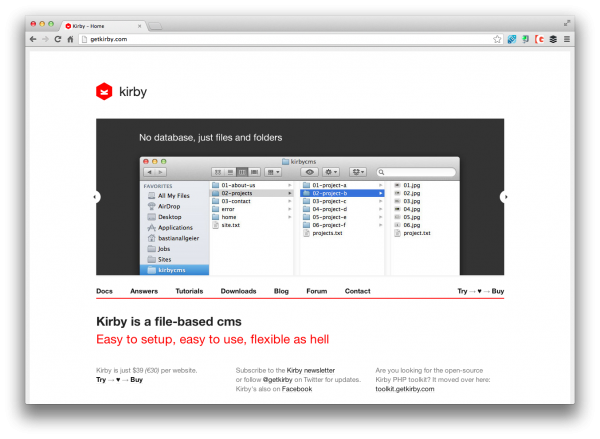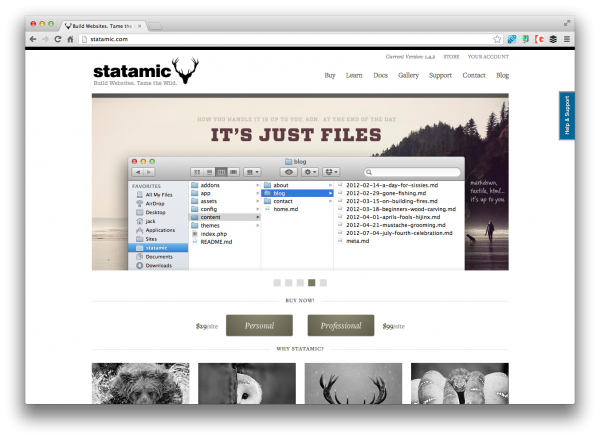WordPress is a database-driven application that works well for millions-upon-millions of sites. Developers like it, designers like it, end-users and publishers like it. It works.
But it’s not perfect and it’s constantly being refined – even some of the things in the upcoming 3.6 release are going to make it even better. Our job as designers, developers, novice and power-users alike, is to help WordPress continue to innovate, bring in the best practices of UI/UX and development standards, as well as look for inspiration in other systems that may be incredibly different.
With a lot of the world moving to a much cleaner and more simple approach to web development and design it’s worth reviewing non-database driven CMS applications that might be doing a few things right. In fact, in an internal conversation within our own team we understand not just the place and value that non-db CMSs bring to the table but how some of the things that they are doing are incredibly right.
From all facets of the front-end to back-end, to design and deployment, there are some other systems that just work – even better in some ways that WordPress. Here are three that have come across our desk that we believe you should review, even if you never actually use it.
1. Kirby
Kirby is a file-based CMS (like the others) and it’s not free, about $39 for the package. Upload it via your favorite FTP application and you’re done.
Yes, you heard me, done. For those that aren’t familiar with non-db CMS’s this may sound like a dream. Trust me, it is. You can then do as you please.
Here are a few looks of what some people have done from a design perspective:
Pretty slick, right?
2. Stacey
Stacey is very similar to Kirby – in fact, the two have often been compared:
The concept of how to organize your content is partly similar with another great file-based open-source cms called Stacey. Kirby offers a completely different, jQuery-inspired API, its own core and a new approach to templates and text formatting. It also contains the kirby toolkit, which will help you speed up your development process.
Stacey stores all of its content using flat text files & folders rather than a traditional database. So installation is as simple as copying the application files onto your server. Choose your favorite FTP and you’re good to go. No install file, no database setup and it will run on any standard php server.
The biggest difference? Open Source and free to download and try.
Here are some examples:
Not bad either.
3. Statamic
Finally, there’s Statamic. Similar to the first two it’s also a paid product and will set you back $29 for personal and $99 for professional.
Here are some sample sites:
So, what are your thoughts? After taking a look, would you use these for some of your future work? What could WordPress learn from the way these are not only implemented but also from a design and development perspective?




25 Comments